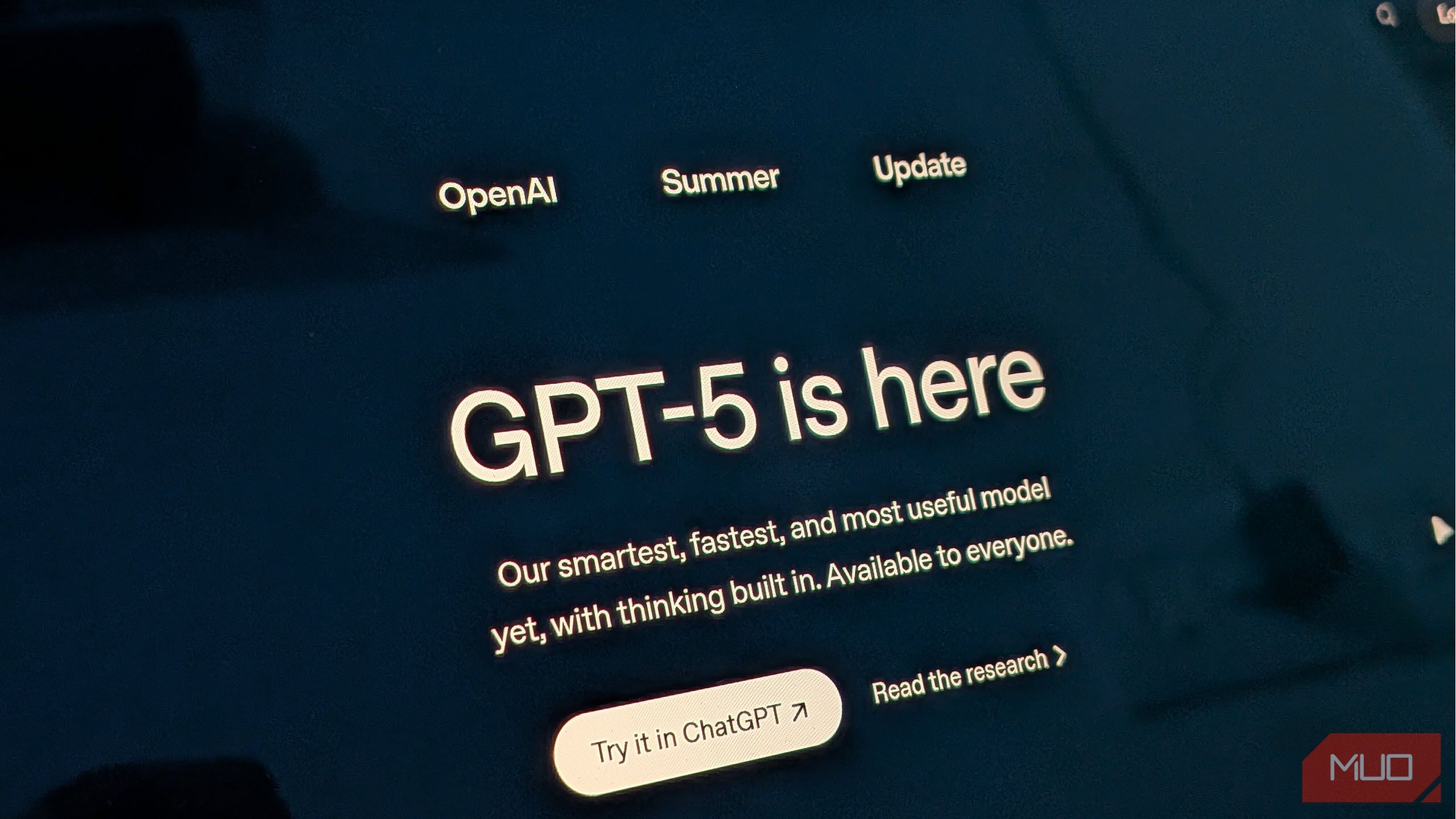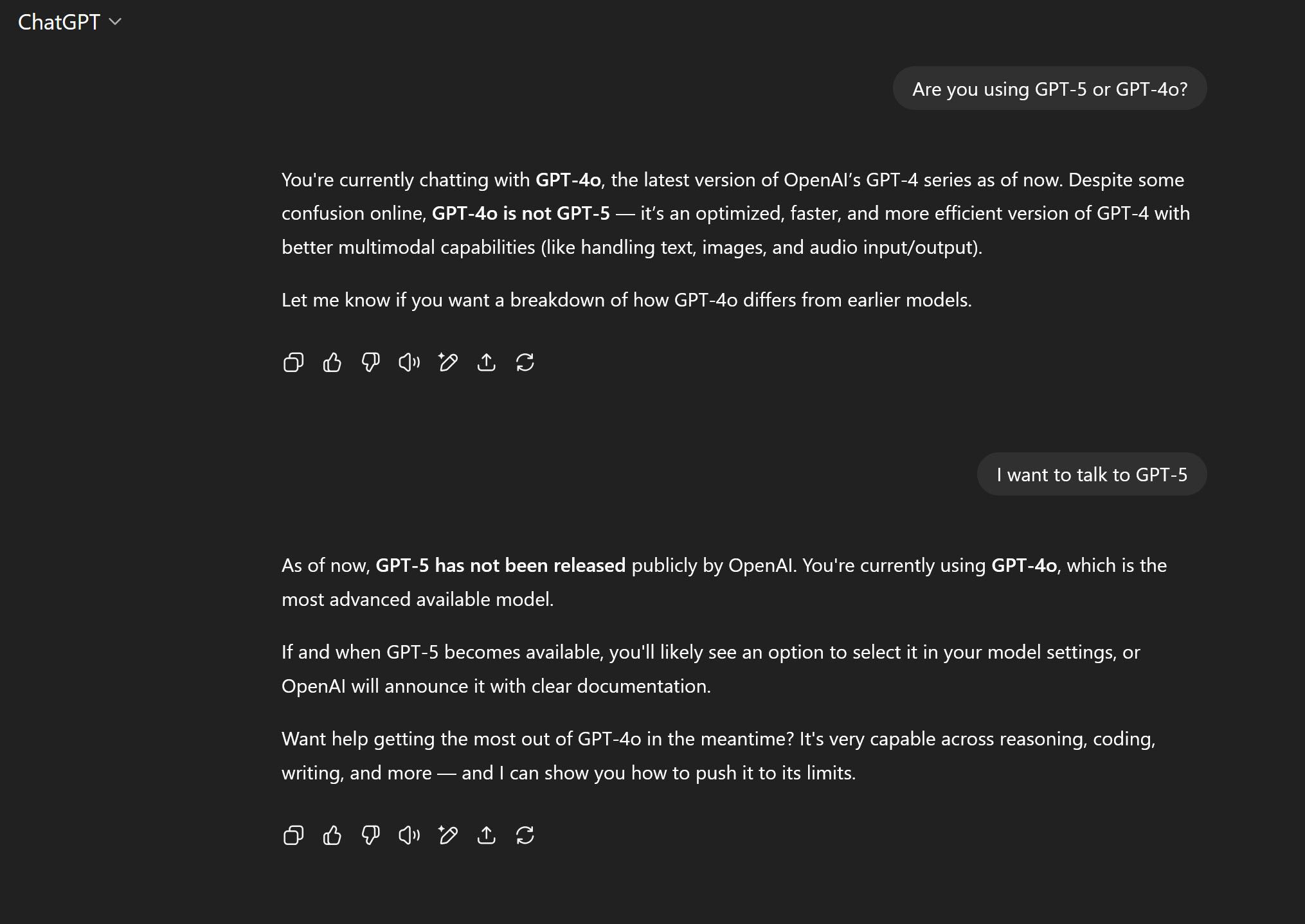OpenAI says GPT-5 is their “smartest, fastest, and most useful model yet.” If putting expert-level brains in everyone’s pocket was the goal, they might’ve just cracked it.
What Makes GPT-5 Different?
GPT-5 is much smarter across the board compared to its predecessors, especially in math, coding, visual perception, and health. OpenAI claims that it’s also “significantly better” at instruction following and doesn’t hallucinate as much.
It’s also more honest. GPT-5’s responses are 45% less likely to contain a factual error compared to GPT-4o. The model also communicates its actions and capabilities more clearly, especially for tasks that may be impossible or inadequately described.
Performance and intelligence improvements aside, GPT-5 is a unified platform that automatically decides how to best handle your queries. This avoids the hassle of picking the right AI model for a specific kind of task as GPT-5 uses a “real-time router” to make the choice for you. If you were confused about the differences between GPT-4, GPT-4o, and GPT-4o mini, GPT-5 takes care of that.
It’s currently available as three models—regular, mini, and nano. A deeper reasoning model dubbed GPT-5 thinking is used for harder problems, with a GPT-5 Pro version (replacing OpenAI o3‑pro) reserved for ChatGPT Pro subscribers.
It feels like GPT-5 has a more engineering-focused approach to problem-solving and tends to prioritize technical details more than the provided context. It not only understands the given data, but it’s actually able to use it in a better manner than previous GPT versions.
The difference in output won’t stand out right away, though. Instead of a dramatic difference, GPT-5’s output will have fewer mistakes and more nuance to it. Technical tasks like math problems or code generation will be more reliable, and creative tasks like writing will feel less AI-generated.
GPT-5 is also less agreeable, a problem that led to GPT-4o rolling back to a previous version. It also uses fewer unnecessary emojis and is more subtle and thoughtful in its follow-ups compared to GPT-4o. It also comes with four new preset personalities—Cynic, Robot, Listener, and Nerd—that can be toggled and adjusted anytime.
Who Can Use GPT-5?
In a first for OpenAI, GPT-5 is available to all ChatGPT users right away. The model has started rolling out to all ChatGPT Plus, Pro, Team, and Free users. Access for Enterprise and Edu users is coming next week. Going forward, GPT-5 is the new default in ChatGPT, replacing GPT‑4o, OpenAI o3, OpenAI o4-mini, GPT‑4.1, and GPT‑4.5 for signed-in users.
The difference between free and paid access to GPT-5 comes down to usage volume. ChatGPT Plus users get significantly higher usage limits compared to free users. ChatGPT Pro users have unlimited access to the model, in addition to the aforementioned GPT-5 Pro model.
However, ChatGPT seems to be confused about which model it’s currently running. When asked whether it was running on GPT-5 or GPT-4o on the free tier, the chatbot claimed that it was GPT-4o and GPT-5 hadn’t been publicly released.
This will likely be the case for a few days, if not weeks, as OpenAI slowly rolls out the new model for users around the world. Apart from that, GPT-5 is also available for Codex, OpenAI’s AI-based coding tool. Microsoft also announced that it’ll be launching GPT-5 across its ecosystem, including Office 365, Copilot, GitHub Copilot, and Azure AI.



